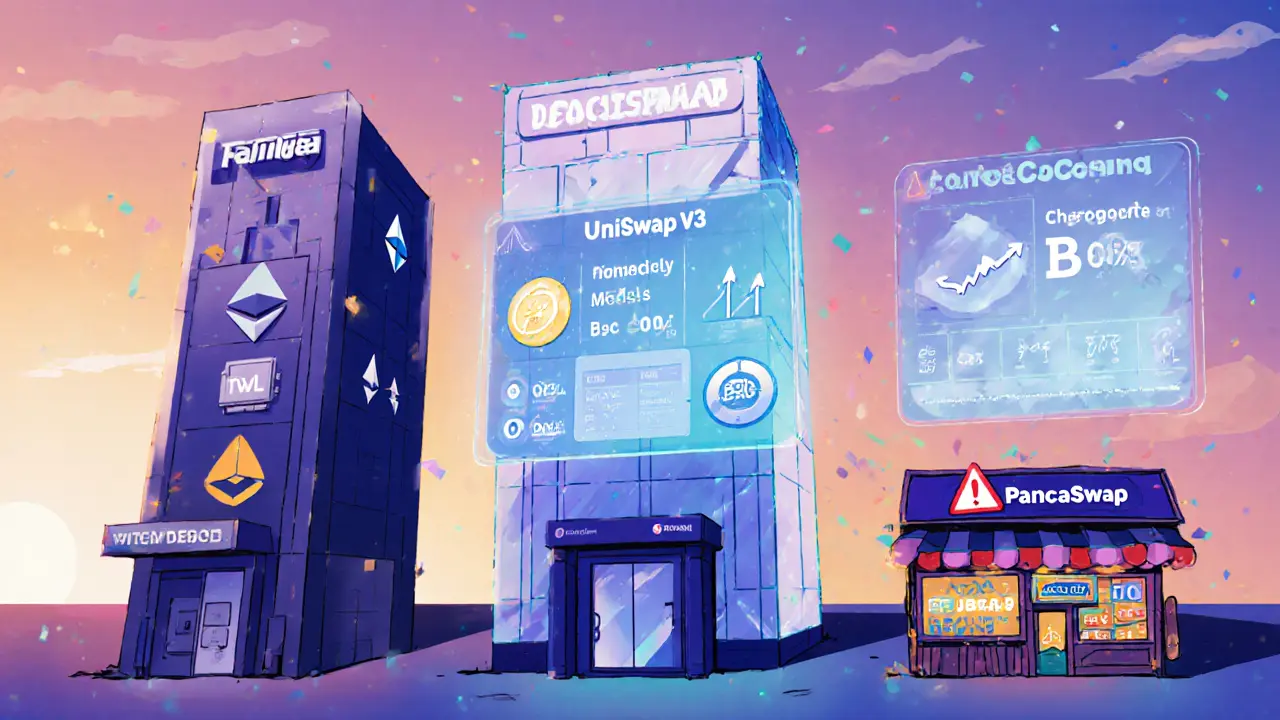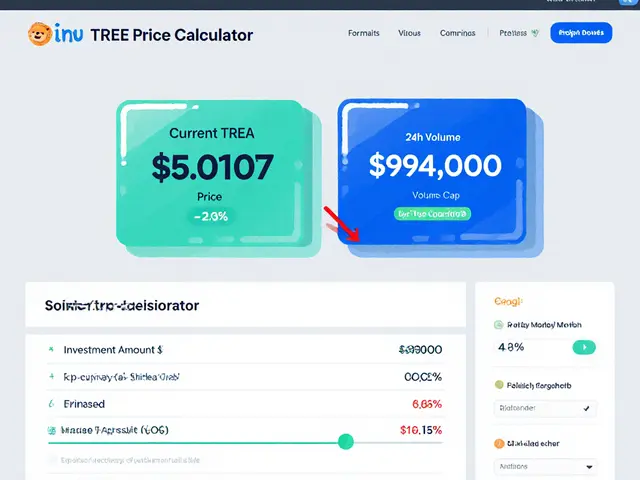- Home
- ::
- Pangea Swap Review: Klaytn DEX with Concentrated Liquidity

Pangea Swap Review: Klaytn DEX with Concentrated Liquidity
Pangea Swap Concentrated Liquidity Calculator
Calculate Potential Fee Earnings
Estimate your potential fee earnings from providing concentrated liquidity on Pangea Swap based on your capital and price range.
Estimated Earnings
$0.00
Potential daily earnings from concentrated liquidity
0%
Annual Percentage Return (APR)
If you’ve been watching the DeFi scene on Klaytn, you’ve probably heard the name Pangea Swap review pop up. It promises higher yields for liquidity providers and smoother swaps for traders, but does it deliver? This article breaks down the platform’s tech, its numbers, the governance plan, and how it stacks up against the big DEXes you already know.
TL;DR
- Pangea Swap is the first Klaytn DEX to use concentrated liquidity, boosting capital efficiency.
- It hit $10million TVL within two months, but recent data shows an ‘Untracked Listing’ status.
- No governance token has been issued yet; the planned STONE token is still pending.
- For Klaytn‑savvy users who can manage price‑range liquidity, it offers strong upside.
- If you need broad market depth or prefer tracked volume data, look at Uniswap V3 or PancakeSwap instead.
Below you’ll find a step‑by‑step analysis that lets you decide whether to start swapping on Pangea Swap, provide liquidity, or keep an eye on its upcoming token launch.
What is Pangea Swap?
Pangea Swap is a decentralized exchange (DEX) built on the Klaytn blockchain that introduced concentrated liquidity to the network. Launched in early 2023, it aimed to solve the low‑efficiency problem that plagued earlier Klaytn AMM models, which spread liquidity thinly across the entire price curve.
How Concentrated Liquidity Works
Concentrated Liquidity is a mechanism that lets liquidity providers (LPs) allocate their capital to a specific price range instead of the whole curve. By narrowing the range, the same amount of capital supports larger trade volumes with less slippage, and LPs earn higher fees because more of their money is actively used.
Imagine you’re providing liquidity for KLAY/USDT. With a traditional CPAMM, your funds sit idle when the price moves far from the current market. With concentrated liquidity, you set a band-say 950‑1,050 KLAY per USDT-and every trade inside that band taps your pool, boosting fee earnings.
Key Metrics & Early Performance
The platform’s launch was impressive: Total Value Locked (TVL) reached $10million within the first two months, and it topped the 24‑hour volume chart across all Klaytn DEXes. However, latest data from major aggregators now label the exchange as an ‘Untracked Listing’, meaning volume and reserve data are not publicly verified.
This shift raises two practical concerns:
- Transparency: Users can’t easily confirm how much liquidity is actually available.
- Credibility: Institutional traders often avoid platforms lacking tracked data.
Despite the data gap, the on‑chain contract still shows active pools, though the exact depth fluctuates based on LP activity.

Governance & the Missing STONE Token
The team behind Pangea Swap deliberately launched without a governance token. Their rationale was that a token should only appear after the protocol proves its intrinsic value, preventing uninformed investors from buying hype alone.
The intended token, STONE a governance token planned for early 2023, has not been released. No official roadmap update confirms a revised launch date, leaving the community uncertain about future voting rights or token‑based incentives.
For LPs, this means you currently earn only swap fees; there are no extra token rewards to boost returns. If the STONE token eventually launches, it could add a layer of yield farming, but that’s still speculative.
Regulatory & Tax Outlook
Transactions on Pangea Swap fall under standard crypto tax rules in most jurisdictions, including the UK. Tax authorities can trace on‑chain activity, so users should record trade dates, amounts, and fees for reporting. The platform does not appear to hide user data, suggesting compliance with existing regulations.
Competitive Landscape: How Does It Stack Up?
To understand where Pangeur Swap fits, let’s compare it with two well‑known DEXes that also use concentrated liquidity: Uniswap V3 on Ethereum and PancakeSwap on Binance Smart Chain.
| Feature | Pangea Swap | Uniswap V3 | PancakeSwap |
|---|---|---|---|
| Blockchain | Klaytn | Ethereum | Binance Smart Chain |
| Liquidity Model | Concentrated Liquidity (first on Klaytn) | Concentrated Liquidity (V3) | Standard CPAMM (V2) |
| Governance Token | None yet (planned STONE) | UNI | CAKE |
| TVL (as of Oct2025) | $10M (peak) | $30B | $9B |
| Data Transparency | Untracked Listing on major aggregators | Tracked & audited | Tracked & audited |
| Target Users | Klaytn ecosystem, advanced LPs | Broad DeFi community | Broad DeFi community |
Key takeaways:
- Pangea Swap offers a similar liquidity advantage to Uniswap V3 but on a smaller network.
- Its lack of a governance token and untracked data make it riskier for newcomers.
- PancakeSwap, while less efficient liquidity‑wise, provides deep liquidity and clear metrics, which many traders prefer.
Pros, Cons, and Who Should Use It
Pros
- First‑mover on Klaytn for concentrated liquidity - potential for higher LP yields.
- Low transaction fees thanks to Klaytn’s efficient network.
- No governance token means no immediate token‑driven price volatility.
Cons
- ‘Untracked Listing’ status reduces transparency and may deter larger traders.
- Limited pool variety; most pools are KLAY‑paired assets.
- Uncertainty around the STONE token launch adds speculative risk.
Best suited for
- Developers and traders already active on Klaytn.
- Experienced LPs comfortable setting price ranges manually.
- Users looking for low‑fee swaps rather than massive depth.
Not ideal for:
- Beginners who need clear, tracked metrics.
- Institutions requiring audited liquidity reports.
- Anyone seeking immediate token rewards.
Quick Checklist Before You Dive In
- Verify the contract address on the official Klaytn explorer.
- Confirm that the pool you want to join has sufficient depth (check on‑chain liquidity directly).
- Calculate potential fee earnings using a concentrated liquidity calculator (many community‑built tools exist).
- Keep detailed trade logs for tax reporting.
- Stay tuned to official announcements for the STONE token timeline.

Frequently Asked Questions
Is Pangea Swap safe to use?
The smart contracts are publicly verified on Klaytn, but the platform’s ‘Untracked Listing’ status means you can’t rely on third‑party volume data. Use on‑chain explorers to double‑check pool balances before committing large sums.
When will the STONE token be released?
The team has not provided a new launch date. Historically they said Q12023, but no token appears on any blockchain yet. Follow the official Telegram or Discord for updates.
How does concentrated liquidity affect my returns?
By placing liquidity in a narrow price band, a higher proportion of your capital is used for swaps, which translates into larger fee shares. In practice, LPs have reported 30‑70% higher APRs versus standard CPAMM pools on the same network.
Can I trade assets that aren’t on Klaytn?
No. Pangea Swap only supports tokens issued on the Klaytn blockchain. To trade assets from other chains you’d need a bridge or a different DEX.
What fees does the platform charge?
The standard swap fee is 0.25%, which is split among LPs in the active price range. There are no extra platform fees on top of that.
Overall, Pangea Swap brings a solid technical upgrade to Klaytn’s DeFi scene, but the lack of transparent data and a pending governance token keep it in a niche, higher‑risk corner. If you’re already deep in Klaytn and comfortable managing liquidity ranges, it’s worth a trial. Otherwise, you might stay with more established DEXes until the platform resolves its tracking and token‑launch questions.


 Finance
Finance





Write a comment